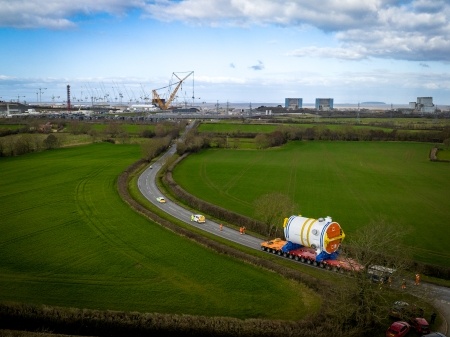
Alteryx Adoption Trial in Customers
By Chris Mead
Data underpins everything we do at EDF – it’s the foundation we base our decisions on and arguably our most valuable resource as an organisation. We’re committed to becoming truly data-driven and are always looking for ways to utilise our data more effectively. I work on the Data Strategy & Planning team and I’m writing to share one of the ways EDF is working to strengthen our data capability.
Ensuring that data is accurate, reliable and trustworthy - i.e. “one version of the truth” is a crucial, if somewhat unglamorous step in the analytical process. This often proves to be a time-consuming, manual and repetitive experience for people working with data regularly. Datasets can be highly complex, often coming from multiple source systems, in various formats, and with potential errors that need to be identified and remedied before analysis starts. It’s probably fair to say that most people working with data would prefer to spend more of their time analysing and less time preparing data.
To confidently use data to drive our decision-making in a fast-moving and complex market, we also need the capability to generate meaningful insights from data quickly. This means acknowledging the need to change how we do things, and better understanding how to manage, interact with, and analyse data. Afterall, there’s not much benefit in identifying an amazing insight if you’re too late to do anything useful with it.
Having the right tools for the job is an important component of this data capability – we need to get from “Data to Insight to Action” as quickly as possible to ensure we’re providing the best products and services for our customers – that’s why we’re currently holding an Alteryx adoption trial in our Customers business area.
Alteryx is an analytics automation platform that enables users of all skill levels to arrive at insights faster while at the same time streamlining the preparatory tasks. Alteryx combines wide connectivity, an intuitive interface and powerful functionality into a software platform that’s helping us change how we do things and enabling teams to not only automate data processes but to discover and share insights with more stakeholders than ever.
This is the second Alteryx adoption period we’re running after a successful initial trial in our Sales & Marketing team last year. This time around, we have c.40 users from across the Customers teams trialling the software by working on real-life business use-cases. Adoptees are given a structured initial development journey that includes 121 coaching workshops with Alteryx developers, interactive virtual classroom training and other resources, including Office Hours sessions and Lunch & Learn workshops.
The trial period is running from May until the end of September and has been met with great enthusiasm by the participants (one of whom I think only semi-jokingly threatened to quit if he wasn’t allowed to keep using Alteryx once the trial had finished). At the end of the trial, we’ll carefully measure the impact of each use-case, so we’re able to clearly articulate the value Alteryx has added to each participant’s work, as well as our overall data capability. I’ll wrap up with a quick description of a recent use-case to illustrate how one adoptee has been doing things differently with Alteryx:
Chris S is a Margin Analyst responsible for producing analytical datasets weekly – he needs to consider market movements, changes in the cost base, the cost of energy, pricing adjustments, etc and amend the data accordingly. This used to mean extremely heavy manual Excel workloads that risked failure due to the volume and complexity of the data. Chris is an expert on this data, although some of his teammates don’t share the same level of experience.
Using Alteryx, Chris has now fully automated these processes while enhancing the ability to troubleshoot processes anytime and anywhere - reducing the pressure on his colleagues if he’s working on other projects and saving over 10 weeks of his own working time each year. It’s also meant Chris has reduced the risk of errors while increasing the frequency of updates – this has meant more trusted, richer data sources for his stakeholders.
Post a comment
Related articles

EDF UK R&D Net Zero Heroes: Ruth

Exciting progress on hydrogen plans for Heysham 2
